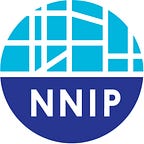Using Data for Community Action on Environmental Justice
by Abby Boshart
A publication of the Local Data for Equitable Communities Resource Hub
Tackling an issue with structural roots and long-reaching effects like environmental justice can seem daunting. Data can be a powerful tool, but it can be difficult to know where to start. Air Alliance Houston (AAH), a veteran of Robert Wood Johnson Foundation and Urban Institute grant programs, exemplifies how using data for community change can be both resident centered and outcome focused to make meaningful impacts.
AAH is a nonprofit advocacy organization working to reduce public health impacts from air pollution and advance environmental justice. They formed as a result of local organizing in the Houston area that began in 1988 and they have had important advocacy wins, including informing the US Environmental Protection Agency’s “Petroleum Refinery Sector Rule,” the withdrawal of factory development plans, the creation of the Harris County Office of Sustainability, and the development of a climate justice and action plan.
A Comprehensive Theory of Change to Address Inequities in Air Quality
AAH’s well-developed theory of moving from data to action is an important piece of their success, including their project for the Using Local Data to Address Structural Racism Grant program.
When AAH begins work in a community, their first step is to educate residents about the issue and the science, in particular the neighborhood’s air quality and the dangers that it poses to residents and their families. This step is critical not only because it helps residents understand how they are being affected, but also because it invites residents to be involved in the research and advocacy process. AHH has been holding community events for years to educate residents about these issues, which has helped to lay the groundwork for their efforts. Like all of AAH’s efforts, this project was community focused. AAH collaborated with residents in five neighborhoods in the Houston area: Galena Park/Jacinto City, Gulfton, Kashmere Gardens, Near Northside/Northline, and Pasadena.
The next step for AAH is to teach community members about data collection and resulting measures. For this project, this step involved deploying air monitors to collect information on levels of nitrogen oxides (NOx), volatile organic compounds (VOC), ozone (O3), and particulate matter (PM2.5). AAH held community mapping sessions in resident’s homes to discuss monitor placement, which allowed them to place monitors where residents noted the worst air quality. This process respects and incorporates the important knowledge that residents have based on their own experiences.
Staff then collected data from more than 30 air monitors housed in resident and community spaces, and displayed it in real time on a consolidated online dashboard and in other publications and presentations.
AAH’s final step is to review the patterns of the data with the residents and work with residents to create a plan for action. AAH does this at a hyper community level, developing next steps for individual neighborhoods, which each face different air quality challenges and sources of pollution. For this project, AAH convened community sessions in each neighborhood to identify stakeholders and develop individualized action plans to set residents up for advocacy efforts. Action plans for this project included targeting certain plants and factories for closing, working to prevent the building of new factories, expanding monitoring, continuing to identify pollution sources, and exploring nature-based solutions to pollution.
Even with AAH’s decades of experience, they are always learning. One of their biggest takeaways from this project was how important a community champion — a community member who leads the efforts — is to the success of recruiting and engaging with residents.
Effecting Change at the Local and Structural Level
AHH has identified a few immediate changes they hope to see in the Houston area from their most recent project, but they are also working toward future structural change. In summer 2023, AAH added three neighborhoods to the program, and it will continue to support the neighborhood coalitions. On the ground level, AAH plans to move forward with integrating their community-collected data with government data sources. They also hope the data they have collected will convince the state government to put air monitors in the areas of concern that they have identified from their studies.
Finally, the organization plans to advocate for government agencies to consider community-collected air quality data in regulatory decisionmaking for a more comprehensive view of local environmental conditions.
